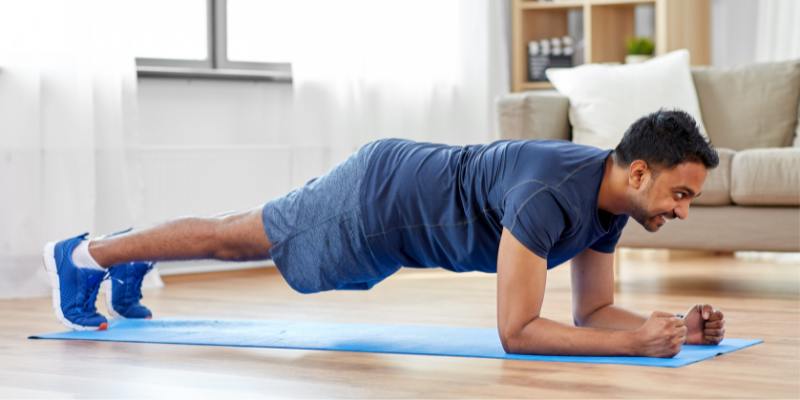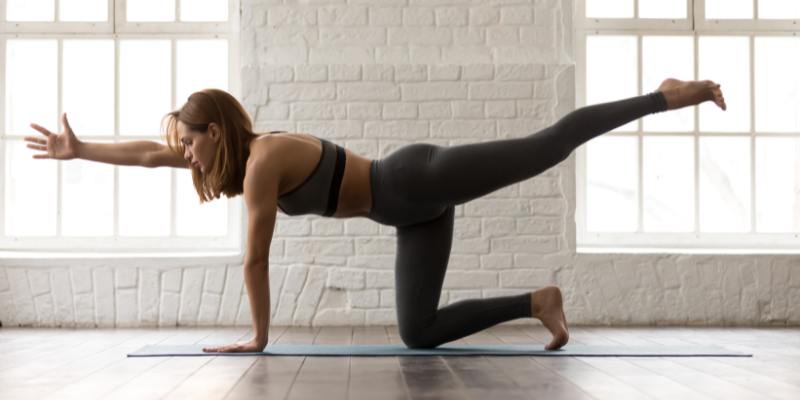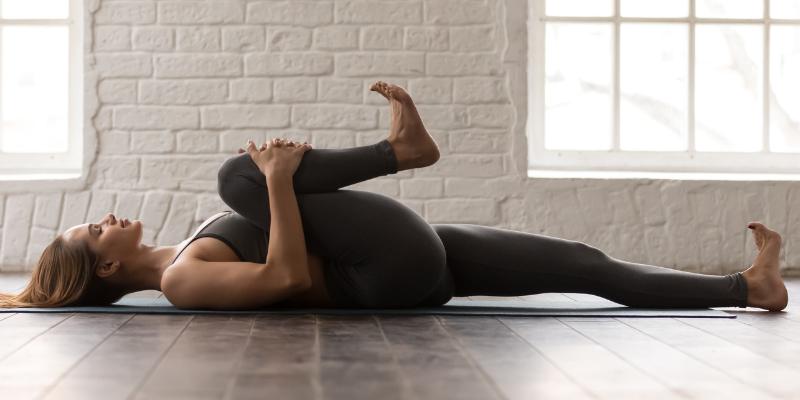Core stability exercises play a crucial role in strengthening the muscles that support your spine, enhancing your balance, and improving overall movement quality. A strong, stable core isn't just about aesthetics—it's the powerhouse behind almost every motion you make, from standing upright to lifting heavy objects or maintaining posture while sitting.
Whether you're a beginner or a seasoned athlete, developing core strength can help prevent injuries, correct muscle imbalances, and significantly boost your athletic and daily performance. In this article, we explore the 8 best core stability exercises designed to enhance strength, control, and balance in your daily life.
Plank Hold:
The plank is a timeless core exercise that builds endurance and teaches your body how to maintain stability through isometric tension.
How to Do It:
- Start in a forearm plank position, with elbows directly under shoulders and legs extended.
- Engage your core by pulling your belly button toward your spine.
- Keep your body in a straight line from head to heels.
- Avoid dropping your hips or raising them too high.
- Hold for 30–60 seconds, increasing time as strength improves.
Why It Works: This movement strengthens your transverse abdominis, shoulders, and glutes while building isometric core control. It helps you maintain spinal stability during various types of motion.

Dead Bug:
This exercise improves coordination and reinforces core engagement during limb movement, simulating daily functional motions.
How to Do It:
- Lie on your back with arms extended toward the ceiling and knees bent at 90°.
- Press your lower back into the floor and brace your core.
- Slowly lower your right arm and left leg until just above the floor.
- Return to the starting position and repeat with the opposite limbs.
- Perform 8–10 reps per side.
Why It Works: The dead bug trains your core to resist hyperextension, promoting anti-extension stability. It enhances controlled movement and improves your awareness of core engagement during limb coordination.
Bird-Dog:
Bird-dog teaches balance and coordination while strengthening the posterior chain and stabilizing muscles.
How to Do It:
- Start in a tabletop position (hands under shoulders, knees under hips).
- Engage your core and extend your right arm forward and left leg back.
- Hold for 3–5 seconds while keeping hips square.
- Slowly return and repeat on the other side.
- Perform 10–12 reps per side.
Why It Works: Bird dogs build spinal stability and cross-body control by reinforcing core and glute activation without allowing rotation or sagging in the torso.

Side Plank:
Unlike the standard plank, the side plank targets the obliques and helps prevent lateral instability.
How to Do It:
- Lie on your right side with your elbow aligned under your shoulder.
- Stack your feet and lift your hips to form a straight line.
- Keep your head in line with your spine and avoid collapsing at the shoulder.
- Hold for 30–45 seconds, then switch sides.
Why It Works: This movement targets the obliques, glute medius, and shoulder stabilizers while helping your body resist side bending, which is essential for balanced core strength.
Glute Bridge March:
This variation of the glute bridge adds dynamic stability, challenging both core and lower body coordination.
How to Do It:
- Lie on your back with knees bent, feet flat, and arms at your sides.
- Press through your heels to lift your hips into a glute bridge.
- While keeping your hips level, lift one knee toward your chest.
- Lower it back down and repeat on the other side.
- Perform 10–12 marches (5–6 per leg).
Why It Works: Glute bridge marches enhance pelvic stability, strengthen glute muscles, and train your core to maintain proper hip alignment as you move your legs.
Stability Ball Stir the Pot:
A powerful anti-movement drill, this exercise targets deep core muscles with added instability.
How to Do It:
- Get into a forearm plank position with arms resting on a stability ball.
- Engage your core and make small clockwise circles with your forearms.
- Keep your torso still, and avoid rocking or swaying.
- Reverse the circles after 15–20 seconds.
- Total time: 30–40 seconds per set.
Why It Works: This exercise challenges your ability to resist both rotation and extension, activating deep, stabilizing muscles in your torso that are essential for a strong, steady core.
Single-Leg Romanian Deadlift (RDL):
This full-body move tests balance, strengthens the posterior chain, and demands core engagement throughout.
How to Do It:
- Stand on one leg with a slight bend in the knee.
- Hinge at your hips and extend the opposite leg behind you as your torso lowers.
- Keep your spine neutral and reach both hands toward the ground.
- Return to standing without losing balance.
- Perform 8–10 reps per leg.
Why It Works: The single-leg RDL boosts hip stability and proprioception while forcing your core to work harder to prevent rotation and maintain balance during single-leg movement.
Pallof Press:
This anti-rotation movement is perfect for teaching your core to remain stable under directional force.
How to Do It:
- Stand perpendicular to a cable machine or resistance band.
- Hold the handle with both hands at chest height.
- Press straight out, keeping your core tight and resisting rotation.
- Hold briefly, then return to the chest.
- Perform 10–12 reps per side.
Why It Works: Pallof presses develop rotational resistance and train your body to maintain spinal control during dynamic upper-body actions, enhancing functional core strength.
Tips for Core Stability Success:
- Start slow and controlled: Don't rush reps. Core exercises are more effective when performed with proper form and a slow tempo.
- Focus on form: Engage your abdominal muscles and avoid letting your lower back sag or overextend.
- Progress gradually: Increase time under tension or resistance only once you've mastered the basics.
- Incorporate variety: Mix static holds with dynamic movements to target all areas of the core.
- Train regularly: Aim for core-focused workouts 2–3 times weekly for optimal results.
Conclusion
Incorporating these 8 best core stability exercises into your weekly routine can dramatically improve your strength, posture, and body control. Each move targets essential stabilizing muscles that protect your spine, improve movement efficiency, and help you stay injury-free. These are not just exercises but functional tools for living a more active and pain-free life.
Whether you're sitting at a desk or playing sports, core stability gives you the foundation to do it better. So take action today—commit to practicing at least 2–3 of these moves per session. Stay consistent, focus on quality over quantity, and challenge yourself as your strength improves.












